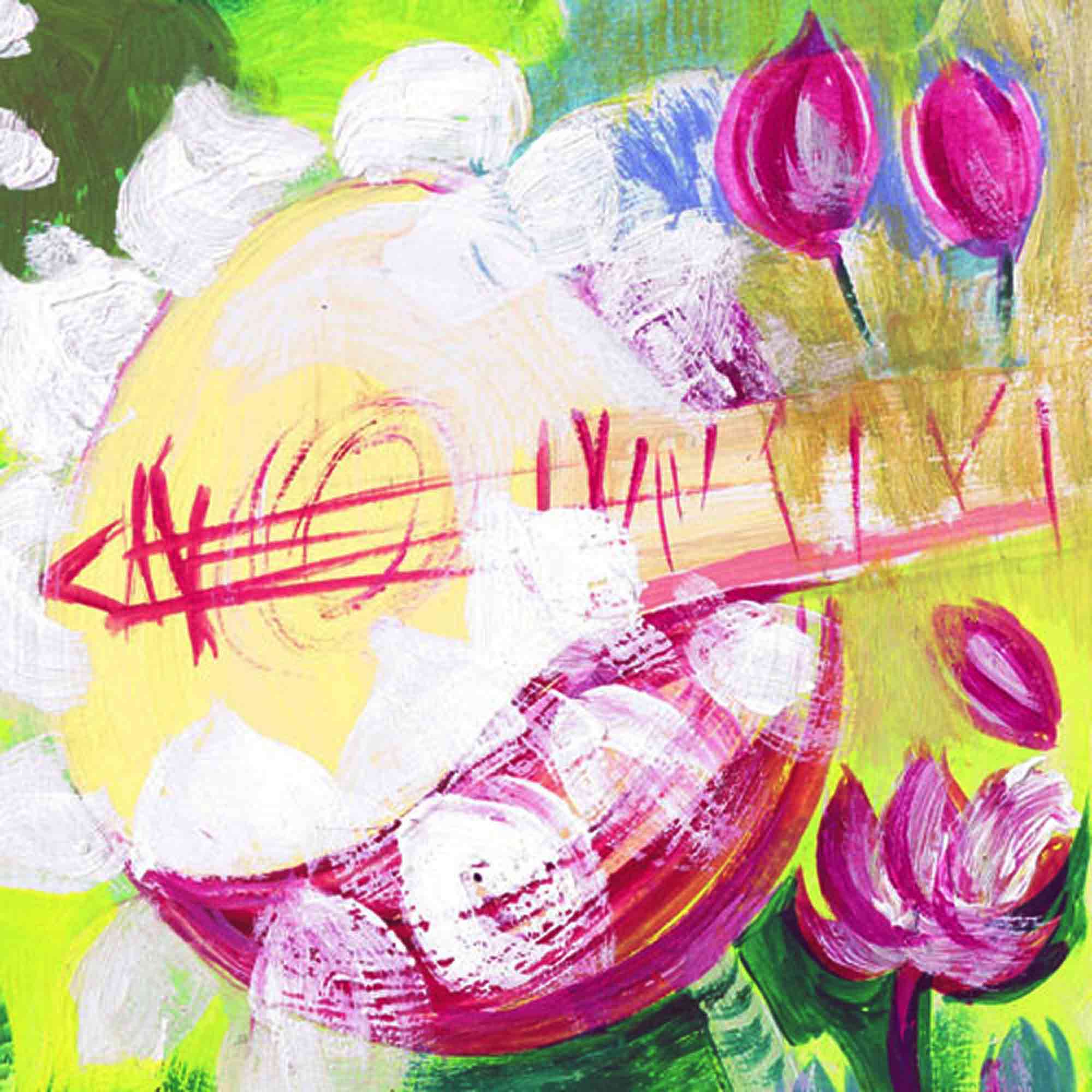
Wollen wir die Musik Indiens nur ihrer “exotischen” Reize wegen genießen? Damit täten wir uns keinen Gefallen! Das Zusammenfließen verschiedener Kulturen Religionen und Philosophien hat die dortigen Musiker zu großen Errungenschaften befähigt. Dabei wird die Integration vielfältiger Einflüsse zu einem gerundeten Ganzen besonders geschätzt. Dies legt den Gedanken eines spielerischen Umgangs mit der Musik nahe. Ein “unbefangener Umgang” soll dabei nicht mit “Leichtfertigkeit” verwechselt werden.

Hermann Hesses Buch Magister Ludi (Das Glasperlenspiel) schildert eine großartige, im Laufe der Jahrhunderte gewachsene Symbiose; ein intuitives wie durchdachtes Zusammenspiel vieler, das die Grenzen von Künsten, Religion und Wissenschaft wenigstens zeitweilig aufzuheben vermag.
Indische Musiker kennen viele ungeschriebene Spielregeln, wodurch beim gemeinsamen Musizieren “innere Partituren” entstehen. Auch ihr Zusammenspiel ist keineswegs flüchtig oder oberflächig, denn sie können ein beliebiges Stück jederzeit präzise wiederholen, bei Bedarf auch in wechselnden Besetzungen. […]
Eine Kombination von Virtuosität, Improvisations- und Rechenkunst stellt die Konzentration von Musikern und Hörern gleichermaßen auf die Probe. Eine Voraussetzung für musikalische Spannungsbögen ist dabei das Maßhalten: die indische Musik beruht teils auf dem “unbewussten Rechnen der Seele”, das wir aus einem berühmten Ausspruch von Leibniz kennen, teils auf perfekt durchkalkulierten Abläufen; und selbstverständlich auch auf der Improvisationskunst der Musiker.
Der Reiz besteht für alle Beteiligten darin, dass man sich zwar auf das “Hier und Jetzt” einlassen muss, zugleich aber auch kombinatorisch mit vorherigen wie zukünftigen Abläufen beschäftigt ist. Dieses Spiel mit dem Zeiterleben bietet Raum für neue Ideen, die an die Errungenschaften der Ahnen anknüpfen statt sie zu verdrängen. Wer dabei gleich an professionelle Darbietungen denkt, wird kaum je die Möglichkeit zum “spielerischen”(sprich “unbefangeneren”) Umgang mit der indischen Musik erwägen. Aber gerade diese Option kann unsere eigene Kultur auf eine zeitgmäße Weise bereichern. Gleichzeitig wird in Indiens Institutionen und Medien seit vielen Generationen recht unbefangen mit den kreativen Möglichkeiten der westlichen Musik “gespielt”. […]
Veröffentlichung | Weitere Artikel und Bücher von Ludwig Pesch: Meine Welt & Worldcat.org >>
Spirituelle Kunst in der indischen Kultur
Uralte Bühnenkunst aus Indien präsentiert die “Ouverture spirituelle”, die dieser Tage die Salzburger Festspiele einleitet […]
Dass das Göttliche selbst in der Kunst in Erscheinung tritt, dass die Menschen Gott in Form von Musik und Tanz erfahren können, ist ein zentraler Grundsatz in den darstellenden Künsten Indiens. Man muss weder Sanskrit beherrschen, noch diese enorm elaborierte Sprache der Blicke, der Mimik und Gestik deuten können, um sie genießen zu können – das versichern alle Künstlerinnen und Künstler, die nun vor Salzburger Publikum auftreten. Die starke Emotionalität, die man in Musik und Tanz spürt, wirkt wie eine Mittlerin zwischen den Kulturen. Bei Alarmél Valli etwa, einer berühmten Vertreterin der klassischen indischen Tanzform Bharatanatyam, wirkt alles vollkommen natürlich, wie die spontanen Gesten und Gesichtsausdrücke, die jemand beim angeregten Kommunizieren macht. Und doch handle es sich gleichzeitig göttliche Ausdrucksformen, meint Valli: “Viele Traditionen sehen den Körper als etwas Unheiliges und Fehlbares an, etwas, aus dem man heraus muss, um in die Ewigkeit zu gelangen. Aber wenn man den Körper als Tempel auffasst, wie wir es in unserem Tanz tun, muss man viel mehr in sich hineinschauen. Dieser Tanz ist heilig und sinnlich zugleich, er ist erotisch, aber auch existentiell – ein freudvolles Gebet, wenn Sie so wollen.” […]
“Ich beschäftige mich viel mit Umweltfragen. Ich würde mich auch als Feministin bezeichnen, auch wenn ich solche Labels nicht mag. Aber es entspricht einfach meiner Lebensweise. Ich habe vor einiger Zeit ein fast 2000 Jahre altes Lied entdeckt. Es handelt von einer kleinen Pflanze, einem Sprössling, und von der Zärtlichkeit gegenüber Lebewesen. Ich war so berührt von dem Text, dass ich ihn aufgeführt habe. Das ist etwas anderes, als auf die Straße zu gehen und zu rufen: Fällt keine Bäume! Es beschreibt vielmehr die enge Verbindung zwischen Mensch und Natur.”
Gesellschaftliche Relevanz der Musik
Die Suche nach einer Ausdrucksform, die der Flötist und Musikwissenschaftler Ludwig Pesch er in der abendländischen Musik nicht finden konnte, ließ ihn in den 1970er Jahren nach Indien reisen. Er studierte karnatische Musik in Madras und legte später ein vielbeachtetes Handbuch über südindische Musik auf. In Salzburg hat er nun über das musikalische Zusammenspiel referiert, das zwischen strenger Regelhaftigkeit und individuellem Ausdruck den Spieltrieb des Menschen beflügelt – und die stark fragmentierte Gesellschaft des Subkontinents zusammenhält.
Ludwig Pesch, der heute in Amsterdam lebt, lehrt an Universitäten, vermittelt indische Musik aber auch im nicht-akademischen Bereich – und da vor allem das unbefangene Spiel. Zudem engagiert er sich in einer Stiftung für indigene Völker Indiens, die Adivasis, die zu den Verlierern der Industrialisierung und Urbanisierung zählen, da sie aus ihren Lebensräumen verdrängt werden.
Musik habe gesellschaftliche Relevanz, ist Pesch überzeugt, da sie die Achtsamkeit stärke und Problembewusstsein schaffe. Und so sind auch etliche Künstlerinnen Teil der weiblichen Protestbewegung, die sich nach den Mordfällen an Frauen in Neu Delhi gebildet hat. Doch an indischen Schulen lege man trotzdem wenig Wert auf humanistische Fächer, sagt die Tänzerin Alarmél Valli. Ein Thema, mit dem Valli auch mit österreichischen Bildungspolitikern trefflich diskutieren könnte.
Quelle: Audio und Text-Transkription: “Spirituelle Kunst in der indischen Kultur” – Interviews von Sebastian Fleischer © ORF Kulturjournal (22.7.2015)
Zum „Klang des Glücks“ – und jetzt?
Statt Lampenfieber erfasste mich von einem Augenblick zum anderen ein unbeschreibliches Glücksempfinden.
Aus dem Beitrag von Ludwig Pesch zur Reihe
“Mein Indien ….. Mein Deutschland”
Meine Welt (Ausgabe 2, 2008)
Über uns >>





